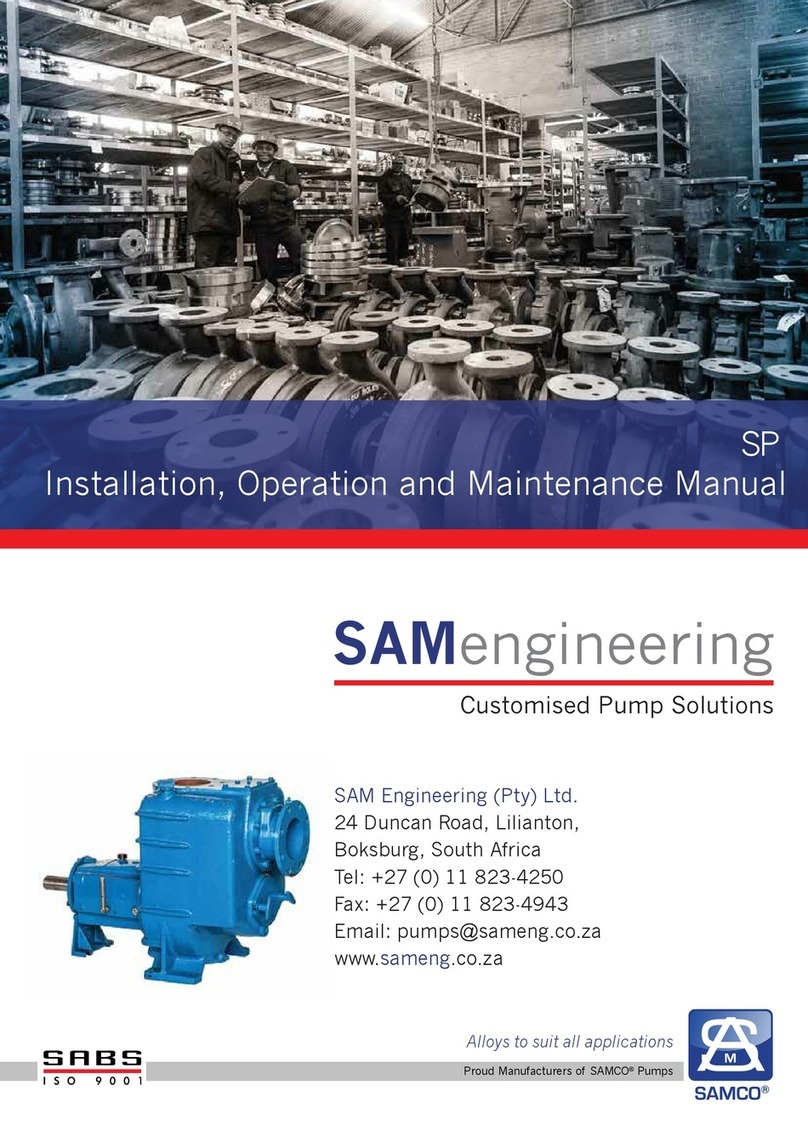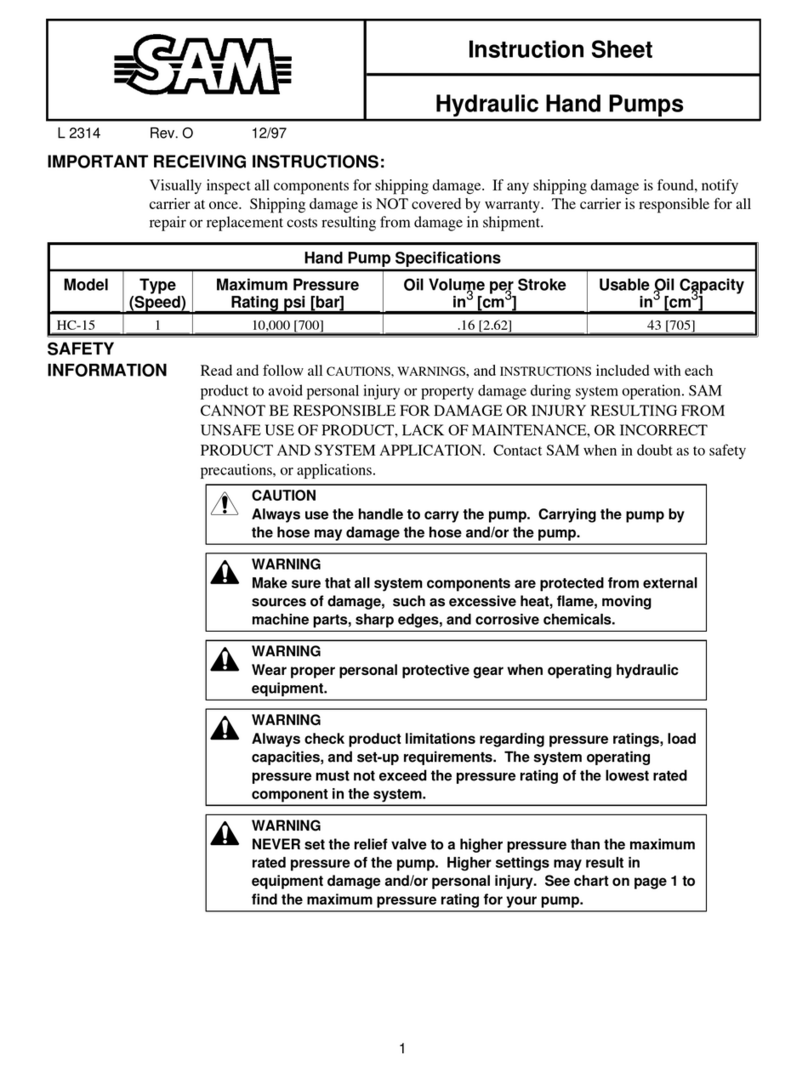10
Pipes should be support independently of the pump so as not to put any
strain on the pump casing. Suction piping, if not properly installed, is a
potential source of faulty operation. Suction lines should be free of air
leaks, and arranged so there are no loops or high spots in which air can
be trapped. Generally, the suction line is larger than the pump suction
nozzle, and eccentric reducers should be used. Eccentric reducers are not
necessary for bottom suction pumps. If the liquid supply is located below
the pump centre line, the reducer should be installed with the straight side
up. Most often air enters the suction pipe entrained in the liquid.
Installations with a static suction lift preferably should have the inlet of the
vertical suction piping submerged in the liquid to four times the piping
diameter.
A large suction pipe will usually prevent the formation of vortexes or
whirlpools, especially if the entrance is flared. A floating vortex breaker
(raft) around the suction piping may be provided if a tendency appears for
a vortex to form at the liquid surface. A baffle placed in front of A stream
of liquid falling into the sump near the intake pipe will churn air into the
liquid. The supply line should extend down into the sump. Liquid supply
entering a well perpendicular to the intake line tends to rotate the liquid,
which interferes with short the supply pipe will remedy for this situation. A
elbow should never to bolted directly to the pumps suction nozzle.
The disturbance in the flow caused by the sharp bend so near the pump
inlet may result in noisy operation, loss in efficiency, and capacity, and
heavy end thrust. A long sweep or long radius elbow placed as far away
from the pump as practicable should be used if a bend is necessary in the
suction line. If separate suction lines cannot be used for each pump, then
a tapering header with Y-branches should be used.
A straight branch header should never be used. Prior to installing the
pump, suction piping and pump should be inspected internally, cleaned
and flushed. If a strainer is installed in the suction line, the openings in the
screen must be checked and cleaned periodically. The opening must be
smaller than the sphere size allowed by the impeller.
The flow velocity in the suction piping should be 1.5 to 2.5 mts
/sec., for normal cases, but should not exceed 3 mts /sec






























